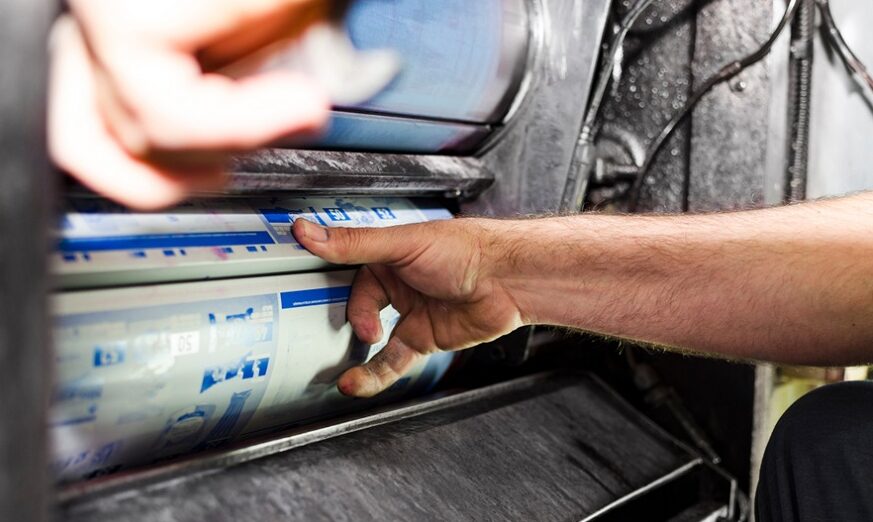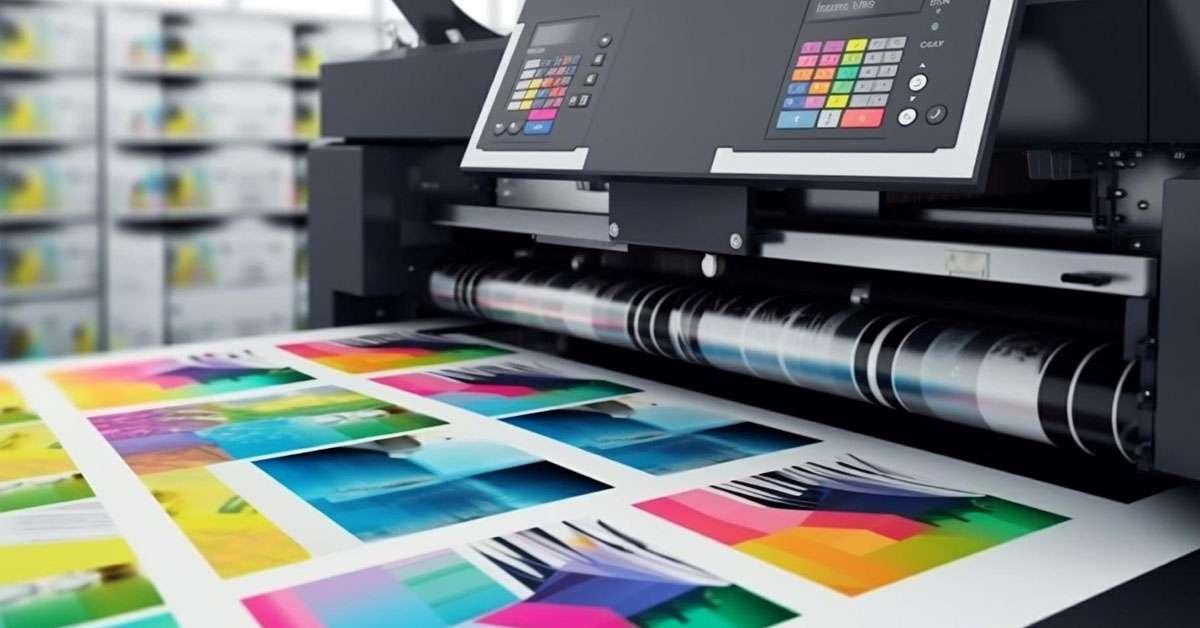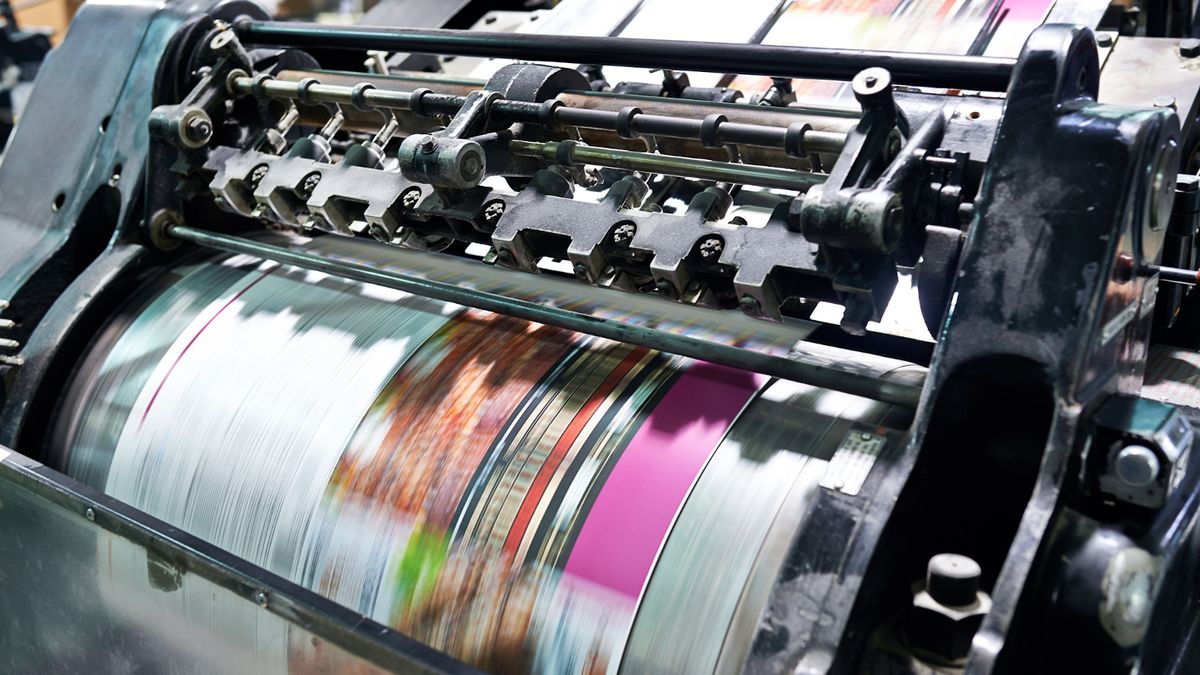In today’s fast-paced world of business communication, making the right choices in offset printing and typography is crucial. These elements not only shape the appearance of printed materials but also influence the message they convey. Understanding the nuances of offset printing and how typography choices can affect your brand’s image is essential for achieving optimal results.
Offset printing, a widely used printing technique, offers high-quality and cost-effective solutions for businesses. It is particularly favored for producing large volumes of materials like brochures, magazines, and newsletters. The process involves transferring an inked image from a plate to a rubber blanket, and then onto the printing surface. This method ensures sharp and consistent results, making it ideal for projects that require precision and detail.

Understanding the Basics of Offset Printing
At its core, offset printing involves several key steps. The first step is creating a printing plate, which contains the image to be printed. This plate is then dampened with water, allowing non-image areas to repel ink. Finally, the inked plate transfers the image onto a rubber blanket, which then prints the final image onto paper.
Advantages of Offset Printing
One of the primary advantages of offset printing is its ability to produce high-quality images with fine details and vibrant colors. It is also highly efficient for large print runs, making it cost-effective for businesses that require bulk printing. Additionally, offset printing offers flexibility in terms of printing surfaces, including paper, cardboard, and more.
The Role of Typography in Print
Typography plays a significant role in how printed materials are perceived. It involves selecting typefaces, sizes, colors, and spacing to ensure that the text is both readable and visually appealing. The right typography can enhance the message being communicated, making it more engaging and memorable.
Choosing the Right Typeface
When selecting a typeface for your printed materials, consider the tone and message you want to convey. Serif fonts, such as Times New Roman, are often seen as traditional and formal, making them suitable for professional documents. Sans-serif fonts, like Arial, are modern and clean, ideal for contemporary designs.
Importance of Readability
Readability is crucial in typography. Ensure that your text is easy to read by choosing an appropriate font size and line spacing. Avoid using too many different typefaces in one document, as this can create visual clutter. Instead, opt for a cohesive look by using one or two complementary fonts.
Combining Offset Printing with Typography
The synergy between offset printing and typography can elevate the quality of your printed materials. By understanding the strengths of each element, you can create designs that are not only visually appealing but also effective in conveying your message.
Creating Consistency in Branding
Consistency is key in branding. Use the same typefaces and colors across all printed materials to create a unified brand image. This helps in building brand recognition and reinforces your company’s identity.
Leveraging Color in Print
Color is a powerful tool in both offset printing and typography. Choose colors that align with your brand and evoke the desired emotions. Be mindful of color combinations to ensure that your text remains legible and your message clear.
Applications of Offset Printing
Offset printing is versatile and can be used for a wide range of applications. From creating eye-catching business cards to producing informative newsletters, this printing method is suitable for various projects. Business cards printed using this method are known for their professional appearance and durability.
Offset Printing for Magazines
Magazines benefit greatly from offset printing due to the high-quality images and vibrant colors it can produce. This method ensures that every issue looks polished and professional, helping to attract and retain readers. For more information, visit this link.
Printing for Newsletters
Newsletters are an excellent way to communicate with clients and stakeholders. Offset printing ensures that newsletters have a professional appearance, enhancing the credibility of the information presented. Learn more about newsletter printing.
Typography Trends in Print
Typography trends are constantly evolving. Staying updated with these trends can help your printed materials remain modern and appealing. Current trends include the use of bold fonts, minimalistic designs, and creative layouts.
Embracing Minimalism
Minimalistic typography focuses on simplicity and clarity. By using clean lines and ample white space, you can create a sophisticated look that draws attention to the most important elements of your design.
Experimenting with Layouts
Creative layouts can make your printed materials stand out. Experiment with different alignments, text placements, and image integrations to create a unique and engaging design.
Conclusion
In conclusion, the combination of offset printing and thoughtful typography choices can significantly enhance the quality of your printed materials. By understanding the strengths of each element and staying updated with current trends, you can create designs that effectively communicate your message and resonate with your audience.

FAQs
What is the primary advantage of offset printing?
The primary advantage of offset printing is its ability to produce high-quality images with fine details and vibrant colors, making it ideal for large print runs.
How does typography affect branding?
Typography affects branding by influencing the perception of your brand. The right typefaces and colors create a cohesive and recognizable brand image.
Why is consistency important in printed materials?
Consistency in printed materials helps in building brand recognition and reinforces your company’s identity, making it easier for customers to remember and trust your brand.
For further insights on the differences between offset printing and digital printing, visit this external link.
This article contains affiliate links. We may earn a commission at no extra cost to you.







